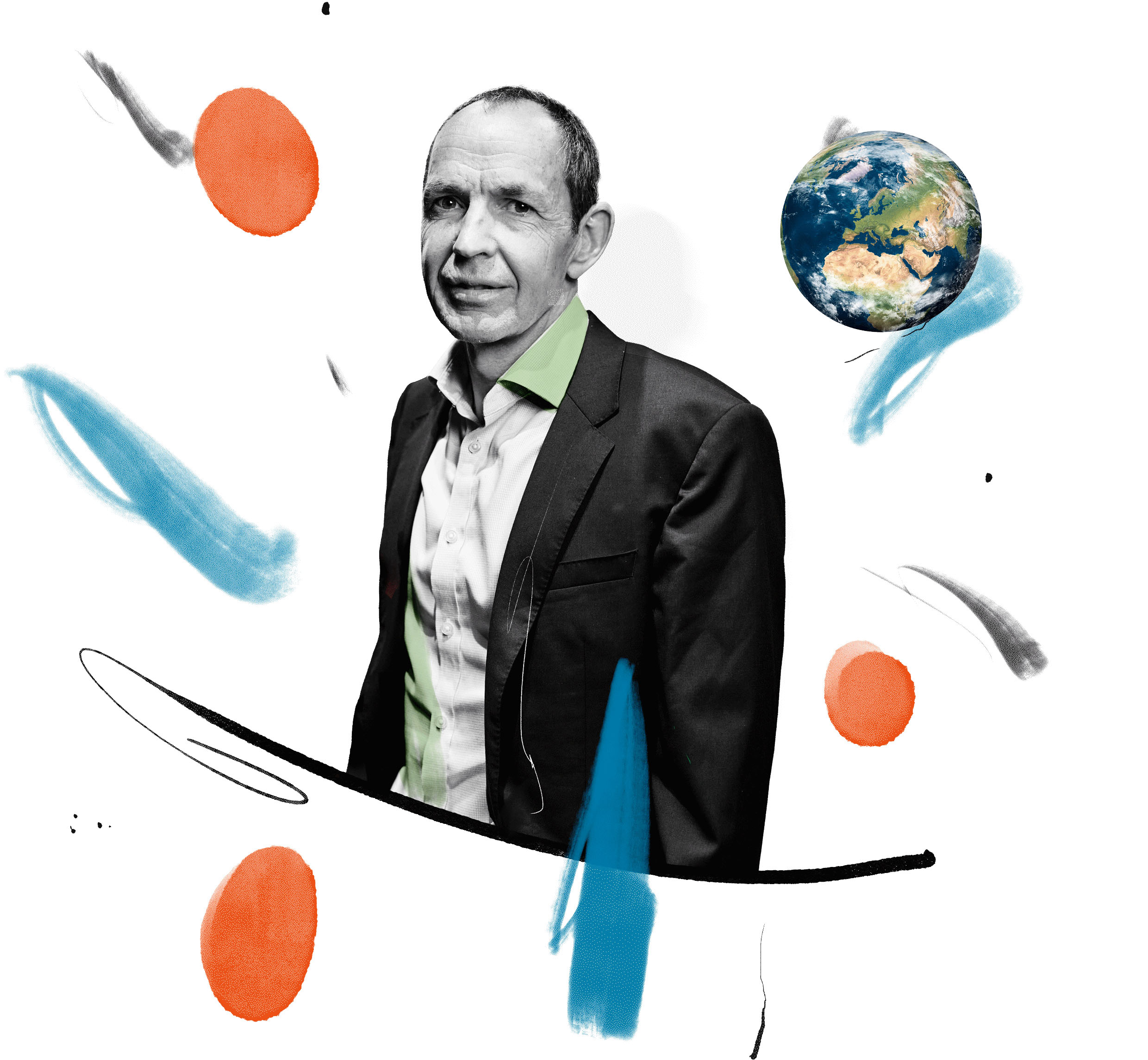Sustainability = opportunity
Carbon neutrality looms large in the future of the process industry. Although there are considerable challenges in store, those who overcome them will be rewarded with qualitative growth.
These are trying years for the industry, as companies are challenged by geopolitical tensions and disrupted supply chains, rising energy prices and resource scarcity, inflation and skills shortages. Yet even in this shifting environment, one topic keeps pushing its way to the top of the agenda: climate change. Business leaders worldwide consider it among the most pressing problems of our time, according to Deloitte, a financial consultancy. If the 1.5-degree Paris target is to be achieved and our planet is to remain viable as a place to live, economic activity needs to be steered onto sustainable paths and processes, while products and industry sectors must be decarbonized. The process industry has a key role to play here, considering that it spans the entire production chain from resource procurement to the finished product. That’s why, all around the world, ways are being sought to create an economy independent of fossil fuels.
“In the coming years, we will experience a complete change in the economy.”
Gauri Singh
deputy director general of the International Renewable Energy Agency

Pressure to act from many sides
“The question that every company must ask today is: Does the world gain or lose from my business?” says Oliver Hahn from Bosch Climate Solutions, which advises top executives. Anyone who does their sums these days without factoring in the environmental and social impact, along with corporate governance, risks disappearing from the market in ten years’ time, he says. Sustainability is the factor that now needs to join the triad of ‘price – performance – availability’, even if for no other reason than it is what legislators now stipulate along with comprehensive reporting obligations. But investors also pay increasing heed to sustainability aspects, and their capital flows to companies that position themselves well in this respect. Additionally, companies in OECD countries especially are noticing that ever more employees are seeking work they find meaningful, and that consumers are demanding ethically produced goods.
Meanwhile, the pressure to transform has never been greater. “Not changing is not an option,” says Michael Sinz, who in his role as director of strategic business at Endress+Hauser is advancing the Group’s global business with key customers. However, embarking on the long road to decarbonization means solving a mammoth task with many unknowns step by step: replacing fossil fuels with renewables, along with green hydrogen both as an energy reservoir and as a raw material for the chemical and steel industries, shutting down unsustainable value chains and building new green ones. To transition intelligently into the future, all of this requires investments, innovation, staying power and solutions that can be implemented quickly.
“We need efficiency improvements more than ever.”
Mike Berners-Lee
university professor and carbon footprint expert

Long-term projects and quick wins
The International Renewable Energy Agency (IRENA) has already calculated the exact road to net zero: The strongest levers are the use of renewable energy and a substantial improvement in energy efficiency. Each of these by themselves could cover one-fourth of the reduction in greenhouse gases needed by 2050. Almost one-fifth could be reduced by electrifying the end-use sectors, more than one-tenth through clean hydrogen and its derivatives, and a further one-fifth through carbon capture, use and storage (CCUS).
Just how much is being done in this area, particularly in the electricity sector, is evidenced by the record addition of 300 gigawatts of global renewable capacity in 2022. Nonetheless, given the world’s steadily growing hunger for energy, there would have to be new installations of more than three times that amount every year in order to stay on the 1.5-degree target. Development of the hydrogen industry also needs to accelerate, but that is conditional on new locations with large amounts of renewable energy available to permit the cost-effective operation of electrolyzers. Then there is the need to build infrastructure for transportation and storage of the hydrogen and its derivatives – and every one of these elements will need massive and coordinated upscaling.
While the energy transition is a project for generations, quick wins for the climate – with associated cost benefits – are more easily achievable in the area of energy and resource efficiency: these in general are measures that can be implemented in existing plants. “We need efficiency improvements more than ever,” says university professor and sustainability expert Mike Berners-Lee, who researches carbon footprints. Converting to renewable energy will be insufficient on its own, he says.
Industry could save a large amount of energy in process heat, particularly through energy optimization – 15 percent on average. But the overall potential is far greater, as a calculation from Germany shows: In 2021, nearly half of the industrial final energy demand could have been avoided using available energy-efficiency technology. That is the equivalent of the electricity production of eight large nuclear or coal-fired power plants. Almost two-thirds of this efficiency potential was left untapped for the sole reason of not delivering payback within three years. And yet, calculated over a longer period, such measures would surely have proved cost-effective.
“Protecting the environment is not boring and expensive; it’s exciting and profitable.”
Bertrand Piccard
solar flight record holder and eco pioneer

Circular instead of linear value creation
The circular economy offers another approach to cut the costs of the transformation and speed up progress toward net zero. According to the think tank Agora, with funders including the European Climate Foundation, better use of raw materials could save around 70 million tonnes of CO2 in Europe alone by 2030, rising to as many as 239 million tonnes by 2050. Expressed in another way, that is up to one-third of the industrial emissions reduction required in the European Union. Depending on the process, recycling steel, aluminum or polyethylene products reduces the energy requirements by a factor of 5 to 12 compared to current primary production. With an eye to the future, a circular economy for these materials would also significantly decrease overall renewable electricity requirements – by 400 terawatt hours per year, to be precise – equivalent to the output of 60,000 wind turbines.
“In 10 years, we will no longer view waste as waste, but as a raw material.”
Julia Binder
professor of sustainable innovation and business transformation

“In 10 years, we will no longer view waste as waste, but as a raw material,” asserts Julia Binder, professor of sustainable innovation and business transformation at the IMD private business school in Lausanne, Switzerland. That will also bring more stability to supply chains and counteract increasing scarcity of raw materials, she says. Moreover, a circular economy brings customers, suppliers, companies and researchers closer together, because the only way to develop viable solutions is jointly. “Business leaders now favor collaboration and transparency over competition and increasingly consider decarbonization as a win-win solution that does not necessarily entail extra costs,” is the opinion of the World Economic Forum.
More than this, a sustainable business model based around the core elements of energy transition, energy and resource efficiency, and a circular economy promises greater independence from global upheavals and thus long-term competitiveness. “In the coming years, we will experience a complete change in the economy,” says Gauri Singh, deputy director general of IRENA, who is not alone in her conviction. “Energy efficiency combined with renewables makes countries less dependent on imports and decouples economies from volatile international oil prices.”
From hindrance to benefit
Real success for the green revolution also needs the right political and economic policy framework. A globally harmonized minimum price for CO2 has been discussed time and again as an ideal tool to create the necessary incentives for market participants and to coordinate climate policy efforts. A glance at Europe shows the leverage effect a move like this could have: Sectors of the European economy that trade in carbon certificates have reduced their emissions considerably more than other sectors in recent years. That said, state subsidies are also needed to boost key technologies like hydrogen to the point of breakthrough, for example using them to get new processes ready for market or to build basic infrastructure. Lastly, it must be ensured that renewable energy is available cheaply, as quickly as possible, and in the gigantic amounts required, which makes green hydrogen competitive as a consequence.
The world of politics aside, more and more companies are recognizing sustainability as an opportunity. Thus, the vision of eco pioneer Bertrand Piccard would seem to be coming true. In 2016 he circled the Earth in a solar-powered plane – without using fossil fuels. He sees the Paris Agreement as the “starting point for a revolution in clean technology”. After his record-breaking flight, he initiated an alliance to promote 1,000 viable solutions for environmental and climate protection. “Up to now, we thought that economic development would be destroyed if we protected the environment. I wanted to show that it is an economic advantage to protect the environment, to be energy efficient,” says the founder. By now there are already more than 1,500 solutions – “devices, materials, processes and systems that benefit humanity and the planet”. Piccard is convinced: “If we make ecology the focus of economic development, we will be much more successful!”

Published 17.10.2023, last updated 27.10.2023.
Dive into the world of the process industry through new exciting stories every month with our «changes» newsletter!









